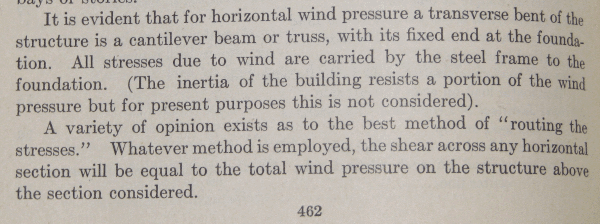Hi All,
I would like to have your feedback/thoughts on my current issue.
I am working on old industrial(process) structural steel building 1960 era. it has 6 floors and a roof. All floors have 5'' concrete slab on steel beam. There is no metal deck, no shear studs and no horizontal bracing. Simply concrete slab on steel beam with some large opening in slab for a typical industrial buildings. Roof has metal deck with horizontal bracing. Building has vertical bracing in perimeter frames. Each floor has equipment, conveyors/fans/screens with horizontal loads. Building is in operation last 60 years with no stability or other issues.
Now a days for this type of design, we put studs on top of beams or horizontal bracing to transfer floor horizontal load to vertical bracing (diaphragm action).
My question is how is this working. Definitely I am missing something?? My concern is how lateral load of each floor is transferred to vertical bracing at perimeter.
We need to add floors on top of roof. Can we consider some diaphragm action with such type of concrete slab on steel beams. Can we introduce some dummy horizontal bracing in staad to achieve horizontal stability of building.
Thanks in advance for your help.
I would like to have your feedback/thoughts on my current issue.
I am working on old industrial(process) structural steel building 1960 era. it has 6 floors and a roof. All floors have 5'' concrete slab on steel beam. There is no metal deck, no shear studs and no horizontal bracing. Simply concrete slab on steel beam with some large opening in slab for a typical industrial buildings. Roof has metal deck with horizontal bracing. Building has vertical bracing in perimeter frames. Each floor has equipment, conveyors/fans/screens with horizontal loads. Building is in operation last 60 years with no stability or other issues.
Now a days for this type of design, we put studs on top of beams or horizontal bracing to transfer floor horizontal load to vertical bracing (diaphragm action).
My question is how is this working. Definitely I am missing something?? My concern is how lateral load of each floor is transferred to vertical bracing at perimeter.
We need to add floors on top of roof. Can we consider some diaphragm action with such type of concrete slab on steel beams. Can we introduce some dummy horizontal bracing in staad to achieve horizontal stability of building.
Thanks in advance for your help.


![[idea] [idea] [idea]](/data/assets/smilies/idea.gif)